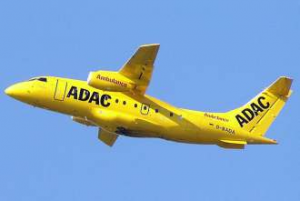The global air ambulance market was valued at only $5.24 billion in 2020 but is projected to reach $14.2 billion by 2030.
Accidents and life threatening medical emergencies require a quick Aand timely approach to save lives. Depending on the patient’s condition, location and the calculated risks associated with delays in handling the situation, emergency response could come in the form of land-based EMS or air ambulance which provides a unique form of immediate medical relief to patients.
Air ambulances, which include both aircraft and helicopters, are fully equipped with the required medical equipment and facilities to provide immediate assistance to patients in remote or relatively inaccessible locations.
 An increase in the number of cardiovascular events such as heart attacks and strokes coupled with the rising number of moving vehicle accidents (MVAs) demands an efficient ambulatory service leading to a global growth of air ambulance services. The global air ambulance market was valued at only $5.24 billion in 2020 but is projected to reach $14.2 billion by 2030 growing at 10.6% CAGR within the decade.
An increase in the number of cardiovascular events such as heart attacks and strokes coupled with the rising number of moving vehicle accidents (MVAs) demands an efficient ambulatory service leading to a global growth of air ambulance services. The global air ambulance market was valued at only $5.24 billion in 2020 but is projected to reach $14.2 billion by 2030 growing at 10.6% CAGR within the decade.
The COVID-19 crisis has led to massive disruptions across industries leading to considerable friction in supply chains that created challenges in production and sales of air ambulances.
 Innovations in medical devices and the rise of digital health technologies usher better remote management of patients by healthcare providers and their integration with air ambulances creates an environment of improved care delivery.
Innovations in medical devices and the rise of digital health technologies usher better remote management of patients by healthcare providers and their integration with air ambulances creates an environment of improved care delivery.
Equipping air ambulances with critical care equipment further enables physicians to better prepare for cases while analyzing the real time data from the air ambulance. Technological advancements are not limited to healthcare as
emergency medical services aircraft have witnessed the creation of Autonomous Aerial Vehicles (AAVs) that led to considerable success in deployment.
EHang, a leading manufacturer of AAVs, successfully transported medical professionals, staff and medical supplies in its two passenger drone. Furthermore, the manufacturer developed an ambulance drone known as Ambular in partnership with the International Civil Aviation Organization (ICAO) for the purpose of swiftly tackling health related emergencies.
Similarly, Kyathi and the International Critical Air Transfer Team (ICATT) jointly launched a fixed-wing aircraft ambulance which was equipped with an isolation pod permitting the safe transportation of patients infected with COVID-19.
These trends are expected to contribute to the overall growth of the air ambulance market globally and inspire further innovation in the industry. The primary challenge air ambulances face is the service charge associated with their use as they are naturally significantly costlier than land based emergency medical services. Although insurance providers may cover some of the costs associated with air medical services, reimbursements are quite low. These challenges prevent the growth of the air medical services market across the globe.
 COVID-19 may seem like the perfect trampoline for air ambulances to spring into action, but its propulsion has been stunted due to the logistical challenges posed by the pandemic. The inability to position crew and aircraft, the lack of commercial airline availability, crew quarantines, crew rest logistics, grounding of medical staff at
COVID-19 may seem like the perfect trampoline for air ambulances to spring into action, but its propulsion has been stunted due to the logistical challenges posed by the pandemic. The inability to position crew and aircraft, the lack of commercial airline availability, crew quarantines, crew rest logistics, grounding of medical staff at
airports and the requirement of COVID-19 tests for family members all presented unique challenges to the industry.
Despite the challenges outlined, the global air ambulance market is expected to exhibit organic growth in the next five years as the insights from the healthcare sector clearly identified.
The increasing number of accidents, adverse cardiovascular events and other medical conditions that demand urgent medical action all create a demand that can only be replenished with the existence of air ambulances which can transport patients to the relevant facilities at the shortest possible time.
Furthermore, access to remote areas is only possible through the existence of air ambulances and with technological
advancements that allow online booking of the services adoption is only likely to increase.











